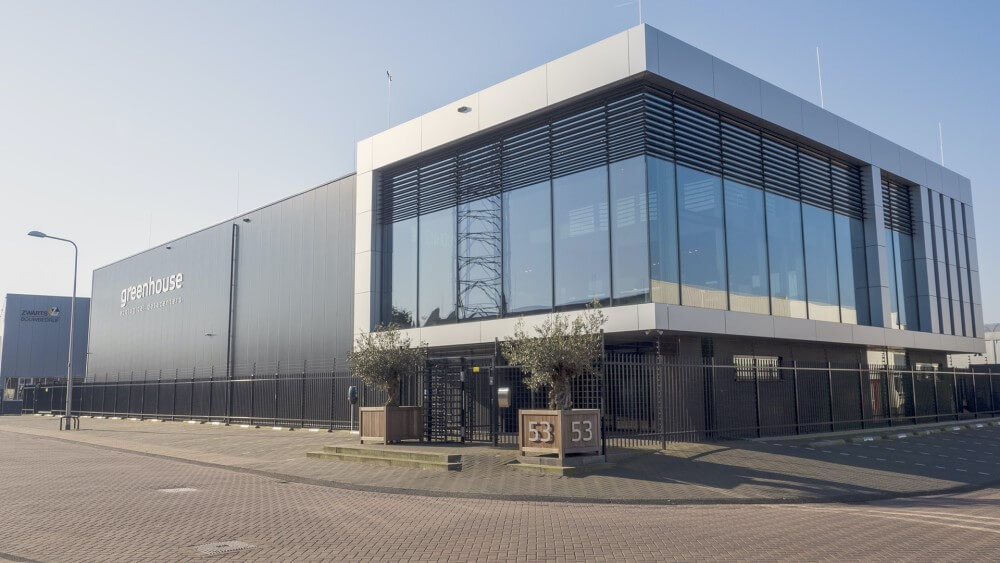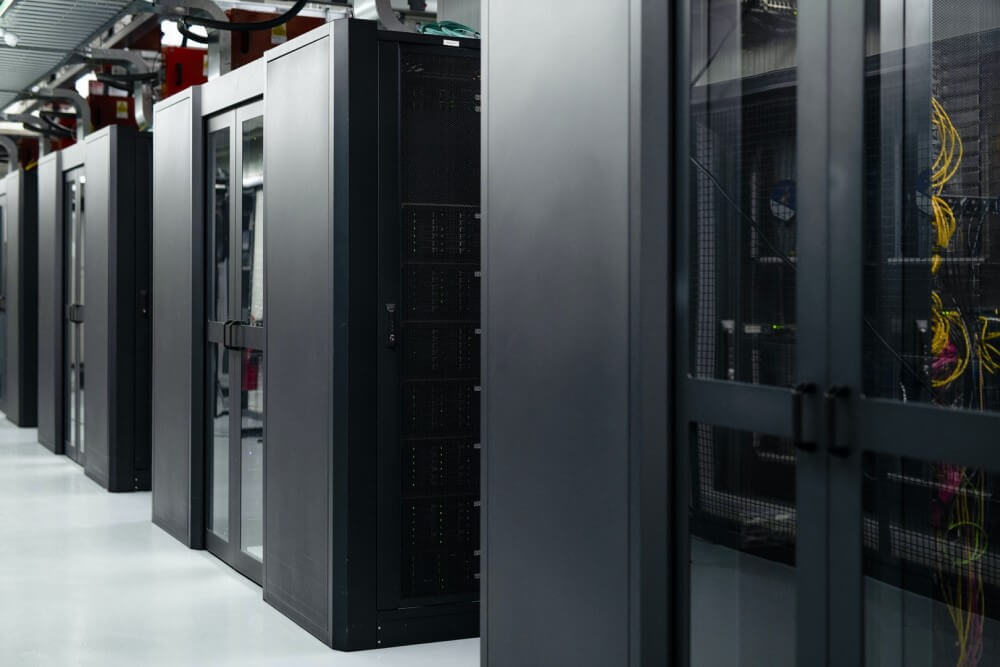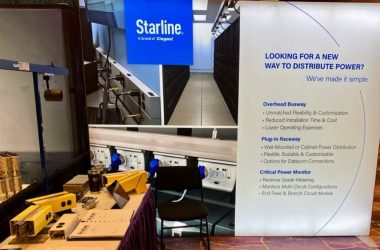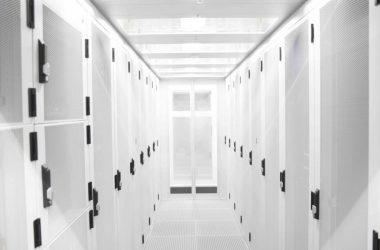

Forze Hydrogen Racing is one of only two hydrogen racing teams worldwide. The team has now migrated its IT infrastructure from an on-premises environment at the Delft university campus to Greenhouse Datacenters’ colocation data center at a distance of about 20 kilometers. Martijn Loonen, Chief Aerodynamics at Forze Hydrogen Racing, shows us the value of the IT infrastructure for the team and his considerations for migrating the IT infrastructure.
“Due to a restructuring of university campus buildings, we had to search for a good alternative to locate our server and storage infrastructure. So, we were actually forced to move our IT infrastructure to another location,” says Martijn Loonen. “As the Forze team is highly motivated to make a hydrogen-based sustainable contribution to society, we expressed our preference for a professional colocation partner with sustainable operations. Preferably not too far from the Delft university campus. Greenhouse Datacenters has managed to achieve an ultra-low Power Usage Effectiveness of 1.15 for its colocation facilities in Naaldwijk, the Netherlands, which is a very energy efficient figure thus a great match with our team. Still, in the Rotterdam/The Hague area, only 20 kilometers away from our previous location.”
What is the value of hydrogen within our society as a whole, with respect to automotive and other use cases?
“A key advantage of hydrogen is its use for long-range operations. The fact that you can refuel quickly without having to wait for a charging station, that is certainly an advantage from the user’s perspective. It can be used in mobility, for example, but it is already bringing added value to companies within the process industry as well. Next to that, hydrogen as an energy source is also very interesting for heavy duty tasks, such as with large freight containers, e.g. for loading and unloading.”
“Long distance and heavy duty, that’s where the initial value add for hydrogen lies. By implementing hydrogen in a racing car and achieving tremendous racing results, we are showing that if it can be done here, it can be done elsewhere too. This way, we hope to contribute to the continuation of the hydrogen revolution.”
The Forze Hydrogen Racing team consists of students from the Delft University of Technology. What drives your team?
“Our hydrogen racing team operates in changing composition while this year it has 26 full time student members. These core team members take a gap year, often between bachelor and master. To dedicate a full year to the racing team. The full team consists of over 60 students. So, we also have many part-timers who do projects for 1 or 2 days a week, to make that hydrogen racing car run as optimally as possible.”
“Above all, it’s a very cool project. We all want to do something with sustainability. It is also a technically complex project and it’s great to be able to use the technical knowledge from our studies in such a practical way. So, it’s a really good learning experience.”
– interview continues below the photo –


What infrastructure and applications did you have to migrate from Delft university campus to Greenhouse Datacenter’s flagship data center 20 kilometers away?
“An important part of Forze’s IT infrastructure is our Network Attached Storage platform. It contains a large number of hard disk drives which are used for extensive data storage purposes. We have also transferred quite some servers from the previous data center environment to Greenhouse. We use those servers for sheer computing power. What’s basically important to us is the number of processors and the amount of working memory. It’s just a lot of processing power that we need for our hydrogen racing efforts and optimization of our achievements.”
How does this IT infrastructure in Greenhouse’s flagship data center contribute to Forze’s hydrogen racing results on the racetracks in Europe?
“The computing power generated by this IT infrastructure in Greenhouse’s colocation data center is critical to the functioning of the Forze racing team. It especially plays an important role in the continuous improvement of efficiencies in the aerodynamics of our hydrogen powered racing car. These aerodynamics are not that different from electric or gasoline, although with hydrogen we do need to pay a bit more attention to cooling as compared to gasoline cars. You need to know how much air for the cooling goes through the radiators. This can be calculated and adjusted based on the simulations we do.”
So, the IT infrastructure co-located in the Greenhouse data center is being used for aerodynamics simulations?
“Mainly, yes. We use the IT infrastructure at Greenhouse for our computational fluid dynamics software platform. It’s a powerful engineering simulation tool to make complex calculations and figure out how to further improve the aerodynamics of the racecar’s bodywork. It allows us to optimize the bodywork around the hydrogen engine so that more air can fly through the radiators. You can combine these simulations with wind tunnel simulations, but unfortunately we don’t have the budget for that. So, next to the qualities of our hydrogen engine and race drivers and so on, the open source based CFD software we use really helps us stand out from the competition.”
How exactly does it work, the use of CFD software?
“The aerodynamics of the hydrogen racing car are optimized by running simulations over and over again. The CFD software allows us to run a simulation after we have made only one isolated adjustment to the car. During those runs we perform, the machines run at full power. So, we need a lot of computing power for the CFD because we always want to adjust only one thing to the car. It’s usually a lot of differential equations that need to be solved and it takes immense computing power to work that out. The server infrastructure acts as a sort of supercomputer. We have one node steering these differential equations after which it is distributed among several other servers.”
“If there is no simulation running, it’s actually a set of idle servers using virtually no power. As soon as a simulation is turned on, they go full compute. Then the power consumption also goes up accordingly.”
“All the results in terms of data are stored on the NAS. In addition, a lot of marketing material is stored on the NAS too – actually, a lot of videos and photos that we have collected in the thirteen years of our team’s existence.”
– interview continues below the photo –


All Forze server and storage systems are now co-located with Greenhouse. What’s your impression with Greenhouse as an engineering expert yourself?
“When first visiting the Greenhouse flagship facility in Naaldwijk, I was impressed. The Greenhouse data center offers us a very professional colocation environment. It’s a strong improvement over our previous situation. Our rack environment was slightly different from the new deployment at Greenhouse. So, we had to make some adjustments, but with the help of the Greenhouse engineers it was all transferred within a day. Their engineers were a great help. It’s also nice to be able to fall back on experts with knowledge of the subject when you can’t work it out yourself.”
Are there any specific Greenhouse data center characteristics that resonate with you?
“The airflow patterns in the colocation racks at Greenhouse are thoughtfully arranged. Efficiencies like these allow us to better and faster conduct the CFD iterations of modeling, simulation and modification. The accessibility of their data centers also fits our needs. As we’re students, we don’t always do our work at logical times. With 24/7 access, we can even go there late at night. Although we have a remote setup, it’s great that we can visit the data center when we need to. I know that Greenhouse has ample connectivity options available, but for our use case connectivity doesn’t play that big a role. Security does, and it’s good to know that the stored data from our team and our partners is safe with Greenhouse.”
To conclude, what goals has the Forze Hydrogen Racing team set for itself for the coming years?
“We have achieved great things with the Forze VIII car, but we expect to launch an even faster hydrogen powered car this summer. After two years of thorough engineering work, our team until now has managed to achieve the following specs: acceleration 0 – 100:
“As a team, we’re aiming at participating in the GT Class of the Dutch Supercar Challenge. We’ll be up against the fastest cars then including Porsches and Lamborghini’s.”
“For the long term, we also hope to enter long range races – as this seamlessly fits the key capabilities of hydrogen in general. As said, the advantage of hydrogen is long range. With an 8-kilogram tank of hydrogen you can drive up and down to Paris in France from Delft in the Netherlands. One tank of hydrogen can really take you a long way. For endurance racing, hydrogen would therefore also be optimal. Especially if you compare it to Formula E, where cars have to be swapped halfway through the race. With hydrogen you don’t have that issue and you get much further. For these ambitions, further development of our Forze racecar is crucial and we’re glad that we found such a solid data center partner for our IT infrastructure and applications.”
About Greenhouse Datacenters
Founded in 2013, Greenhouse Datacenters offers two colocation data centers in Naaldwijk, the Netherlands, in the Rotterdam/The Hague area. Its data centers feature an energy efficient Power Usage Effectiveness (PUE) value of 1.15. The facilities are 3rd party accredited and certified for ISO 9001, ISO 14001, ISO 27001 and PCI DSS. These data centers provide ample connectivity options via more than 10 carriers – with cloud on-ramps, ultra-low latency connections to Amsterdam, and access to European Internet exchanges.
To learn more about Greenhouse Datacenters, visit: https://www.greenhousedatacenters.nl/en.
To learn more about Forze Hydrogen Racing, visit:
https://forze-delft.nl/










